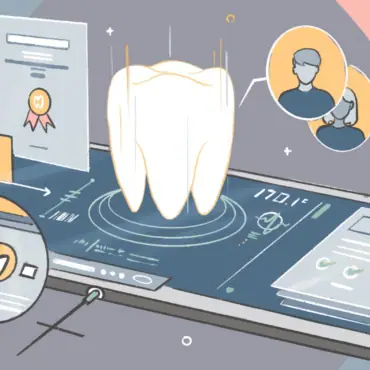Dental problems are surprisingly common, whether it’s a persistent toothache, cavity, or even the loss of a permanent tooth. Whatever your oral health concern may be, there’s a dentist out there who’s ready to fix it!
One of the more common procedures that people visit their dentist for is a dental bridge. If you are unfamiliar with this apparatus, that’s understandable. Most people have only heard of the more mundane elements of dentistry, like fillings or scaling.
However, bridges are important in restoring oral health functions to patients with tooth loss. They’re widely used to tackle various problems experienced in restorative dentistry.
The following article will address everything you need to know about dental bridge types, benefits, procedures, and costs.
Read on to find out more!
What is a dental bridge?
A dental tooth bridge is a type of prosthetic designed to replace a missing tooth or set of teeth. Whereas proper dental implants include artificial roots placed within the gum, bridges function in a completely different way.
A bridge typically includes the use of one neighboring tooth on either side of the missing tooth or gap. These neighboring teeth are employed to help hold the bridge up. A false tooth is placed within the gap to “bridge” it and help cover it up.
The neighboring teeth are often filed down until they can hold up a dental crown, which is a special, medical-grade cap that dentists place over filed or damaged teeth to restore them to their normal function. The missing tooth will also be bridged by a crown, but it may be significantly deeper or larger than the connected neighbor crowns in order to effectively fill the tooth gap
Why would I need a dental bridge?
There are many reasons why you would benefit from a dental bridge if you have experienced tooth loss:
- Have you stopped smiling ever since your tooth fell out? Don’t worry, a dental bridge can help make things right again.
- Dental bridges can prevent your naked gum from developing an infection.
- Losing teeth results in losing the ability to chew food, but getting a dental bridge installed can help fix that.
- Sometimes a missing tooth may affect your gum and jaw structure, which is why it’s essential to fill in any missing teeth as soon as possible.
What are the types of dental bridges?
Many dental problems can be overcome using bridges, which is why dentists have invented a variety of different bridge types to help address each concern individually:
- Traditional Fixed Bridge: This is the most common type of bridge for restoring tooth loss. With this type, a crown is placed on the neighboring teeth located on either side of the gap left behind by the missing tooth. A filler tooth is inserted within the gap, held in place by the complementary crowns. Such bridges are typically made of porcelain fused to a metal or ceramic apparatus. This method works best when there are healthy teeth on either side of the missing one. However, these teeth will need to be filed down so that they may each support a new crown.
- Cantilever Bridge: Cantilever bridges are employed when one of the neighboring teeth needed to support an additional new crown is missing. A total of two artificial crowns are placed within the mouth instead of the three that are typically used in a traditional fixed bridge.
- Maryland Bonded Bridge: Alternatively known as resin-bonded bridges, Maryland bonded bridges are employed to replace missing front teeth. With this method, a pontic is attached to the adjacent healthy teeth. This tactic helps keep the new artificial tooth in place. It does not include filing or reshaping of neighboring teeth.
What Is the dental bridge procedure?
Installing a dental bridge is relatively straightforward and can be completed within one to two in-office sittings.
First, the dentist will clean the exposed gum and surrounding area. After this, they will file down the appropriate surrounding teeth and sterilize the area once more. The teeth are filed down just enough to help support an artificial crown.
Next, a mold is created to make a bridge. Sometimes, dentists give their patients temporary bridges while they wait for their permanent bridge to be ready.
Once this is done, your dentist will install the bridge using special dental cement. Sometimes, dentists may choose to anchor the bridge with a dental implant, but this is decided on a case-by-case basis.
Give $50, get $50.
Refer someone to book a dentist with Opencare and you’ll both get $50.
How much does a dental bridge cost?
Dental work is never cheap. A traditional or cantilever bridge can cost you anywhere between $1500 and $5000. Maryland bridges cost between $1500 and $2500. If you choose to get an implant-supported bridge, you can expect to pay between $4000 and $15,000.
Luckily, having insurance can significantly reduce the cost associated with these procedures by up to 50%, bringing the maximum cost for a traditional or cantilever bridge down to $2500 with $1250 for a Maryland bridge and $7500 for an implant-supported bridge.
The exact cost varies depending on how intense the procedure is expected to be.
How long does a dental bridge last?
Dental bridges typically last between 10 to 15 years, but this number can be increased or decreased depending on how well you care for your teeth. However, if you abuse and neglect the bridge, it may begin to disintegrate in just 5 to 7 years.
Dental bridges can last longer if you brush your teeth regularly. Toothpaste containing silica is preferred and often recommended by dentists themselves. Flossing is essential, too! Try to avoid sugary foods or highly acidic drinks as these can deplete your bridge’s health.
What are some potential problems with dental bridges?
Dental bridges are effective; installing them is a painless process thanks to anesthesia, and you can get done with it relatively quickly. However, this procedure is not without its problems. Below are some common potential issues associated with dental bridges:
- The teeth adjacent to the missing tooth are often filed down to help support a new crown, hence altering perfectly healthy teeth. You can’t get a traditional or cantilever bridge without filing down adjacent teeth.
- Due to their complex structure, dental bridges are difficult to keep clean and therefore more prone to infections than implants or filled teeth. However, if you follow a strict hygiene routine, this shouldn’t be a problem.
- Bridges need to be replaced every 10 to 15 years.
You should keep these things in mind before committing to a dental bridge. There are many benefits of getting a bridge put in place, but there are some undeniable downsides, too. As a result, many people consider alternatives, the primary one being implants.
Should I get bridges or implants?
The debate concerning whether you should get bridges or implants is long-running.
Implants tend to last longer than bridges. They can typically offer you protection throughout your entire lifetime, whereas bridges won’t last you more than 10 to 15 years. Furthermore, implants are known to support jaw health. This is because they are entirely anchored within your gum instead of merely being placed over naked gum tissue. With implants, your jaw’s mechanics are not challenged and can continue to function the usual way.
Give $50, get $50.
Refer someone to book a dentist with Opencare and you’ll both get $50.
Dental bridges are also more likely to get infected as opposed to implants. Brushing and flossing around the artificial crowns can pose a challenge, and dentists may prescribe additional tooth care methods to help keep your bridge clean and healthy.
However, if you brush regularly with toothpaste, keep yourself up to date with dental checkups, and floss in all the right places, your bridge will definitely remain free from infections.
There are many reasons why people prefer getting an implant over a bridge. However, bridges are still extremely common and have remained a dominant choice despite patients having the option for an implant.
The most essential convincing factor for this result is the cost. Bridges are significantly more affordable than getting an implant. Implants may require additional procedures, like grafting or a sinus lift, which only result in a higher final cost.
Bridges do not require such additional procedures. Things like jawbone density or gum strength are not important and can easily be overlooked. Also, you can easily get a bridge placed without any required surgery.
So, if you’re tight on budget or want to stay away from extensive surgical procedures, find a dentist and schedule a bridge appointment now!
Final Thoughts
As you can see, there are many different bridge types out there. A qualified dentist can help you decide which one is best for you. Before making an appointment, be sure to consider your available options.
Getting a dentist appointment can be a draining task, especially if you’re short on time and don’t know where to find a reliable dentist near you. However, once you get your appointment details in order, you’ll be glad you did.
Give $50, get $50.
Refer someone to book a dentist with Opencare and you’ll both get $50.
Dental work should never be put off, especially if it includes something as crucial as getting a bridge fixed. With the right care, your teeth will be set free of any troublesome pain in no time.








